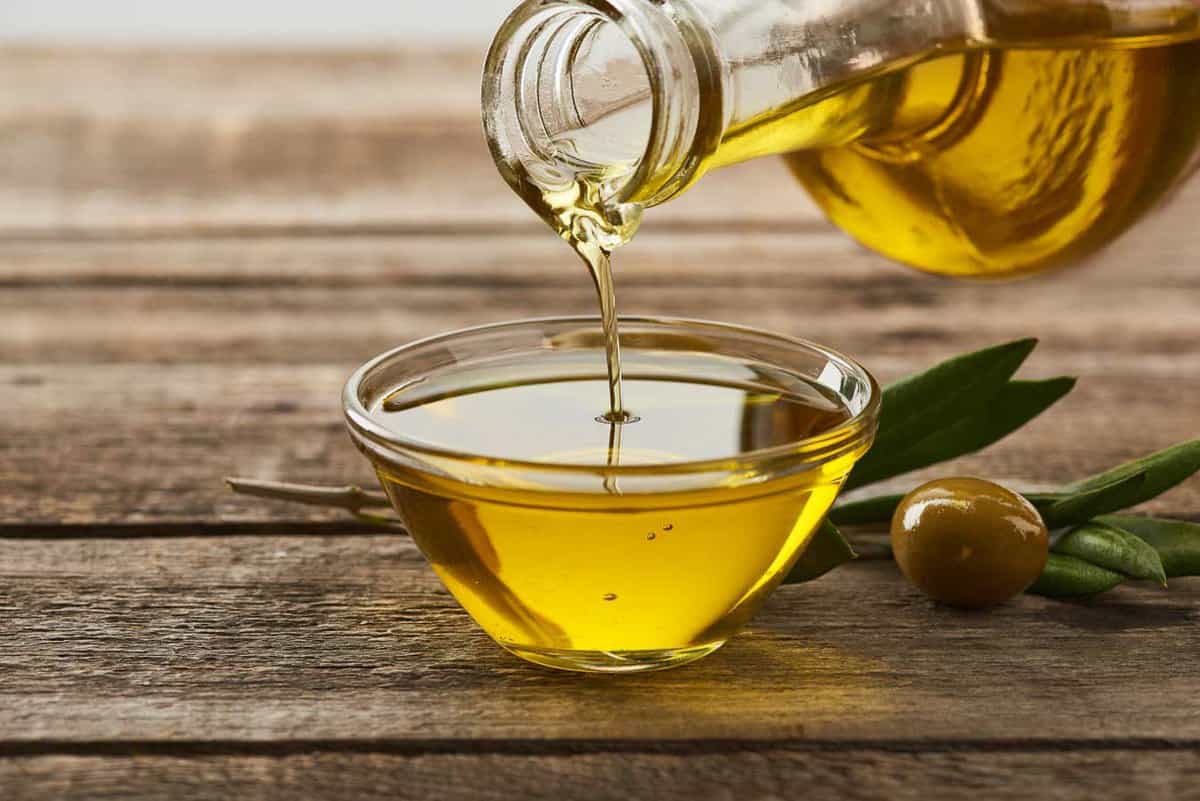The United States Department of Agriculture forecasted that Americans will consume 5.3 billion pounds of canola oil in 2025, and consumers are still unaware of its health risks. Kick canola to the curb with these better-for-you substitutes.

Fats play a critical role in cooking. They help transfer heat, create texture and carry flavor in ways that water-based ingredients simply can’t. Fats make roasted vegetables brown evenly, give pie crusts their flaky layers and help baked goods turn out tender and soft instead of dry and crumbly. In the form of oil, fat becomes one of the most convenient tools in the kitchen. It’s pourable, mixable and works across a wide range of techniques, from sautéing and frying to baking and dressing salads.
Canola oil has become one of the most commonly used cooking oils in American kitchens. It’s affordable, easy to find and mild in flavor, which makes it a popular choice for people cooking at home and food manufacturers. But it’s not the only option, and in many cases, not the best one.
If you’re trying to cut back on processed foods, boost the nutrition of your meals, or just looking to add more variety to your pantry, there are plenty of other oils worth considering. From cold-pressed oils that bring extra flavor to those that hold up to high heat, these alternatives can give you more control over how your food turns out and how it supports your health.
Why consider alternatives to canola oil
Canola oil is extracted from the seeds of the rapeseed plant, a yellow-flowering plant related to cabbage and mustard. According to Tasting Table, innovations in the 1960s made canola oil one of the most popular choices in modern kitchens.
The USDA predicts Americans will consume 5.3 billion pounds of canola oil in 2025. Widely available, affordable and with a high smoke point, canola oil is ideal for cooking and baking. Dr. Guy Crosby at The Nutrition Source says canola oil is also low in saturated fat and has high levels of omega-3 fatty acids. It also contains phytosterols, which can help manage cholesterol.
However, like other vegetable oils, canola oil is highly processed. Dr. Crosby describes the heat-pressing process of extracting oil using a chemical solvent. While the resulting oil contains minimal levels of solvents and comparable amounts of trans fats to other oils, the manufacturing process has raised some concerns for people looking to avoid processed foods.
Many oils today are now made by cold-pressing. This reduces processing and brings unique flavors and extra richness to dishes, with some adding nutritional benefits. Others may be better for frying or baking, depending on their characteristics. Whatever result you are looking for, exploring outside the world of canola and other vegetable oils can transform your cooking.

Factors to consider when choosing oil for a recipe
Many oils are versatile enough to work well for various sweet and savory recipes. Taste is an important factor in choosing the right oil for your recipe. Canola oil is popular because it’s neutral in flavor. Oils with mild flavors won’t alter the taste of a dish, which is ideal for many baked goods. Meanwhile, more flavorful oils, like olive oil or sesame oil, can bring extra complexity to a recipe with their flavors.
You should also consider the smoke point of an oil. This is when oil starts to smoke and break down, potentially giving food a burnt taste or destroying beneficial nutrients. For recipes that need high heat, such as frying or roasting, choose an oil with a high smoke point.
Although all oils contain fat, the types of fat and other micronutrients change from oil to oil. Some oils might be better if you want certain antioxidants or nutrients in your diet. For instance, Everyday Health notes that grapeseed oil contains vitamin E and flaxseed oil contains omega-6 fatty acids.
Cost and sustainability may be important as well. These will depend on the oil’s base ingredient, including how abundant it is, how easy it is to press and how ethical production is. Some oils may be more expensive but are worth it for the taste and characteristics.
Alternative oils for cooking and baking
With dozens of oils to choose from for cooking and baking, knowing the characteristics of the most popular ones can help you get started. These are some favorites to add to your pantry.
Olive oil
Olive oil has been a go-to alternative oil for decades. Featured heavily in Mediterranean cuisine, it has a rich flavor that benefits sauteed vegetables and meats, complements bread and salads, or even brings depth to baked goods like cakes and cookies. Extra virgin olive oil is great for heart health, but if you need a higher smoke point, use regular or light olive oil.

Avocado oil
Avocado oil brings together taste and versatility. The subtle flavor compliments a range of dishes. It also has one of the highest smoke points of any oil, meaning you can use avocado oil in frying, grilling and roasting. It’s excellent for recipes like air fryer baby potatoes where you want crispy edges and need to cook at a higher heat.
Coconut oil
Coconut oil is available in virgin and refined varieties. Both have more saturated fats than other oils, making this oil solid at room temperature. Virgin coconut oil has a noticeable coconut taste, making it ideal for baked goods, curries or summery dishes. Refined coconut oil is a neutral option with a slightly higher smoke point that you can use instead of canola oil.

Peanut oil
Like avocado oil, peanut oil has a high smoke point and a neutral flavor. It’s a popular oil for deep frying, stir-frying and Asian-inspired dishes where it can bring just a hint of nuttiness. Available in both refined and unrefined varieties, you can use refined for better heat tolerance or unrefined for more flavor.
Other oil options
A range of other oils offer additional alternatives when it comes to flavor, smoke point and health. Sunflower oil is an affordable option with a mild taste. Grapeseed oil is light and neutral and will not overpower other ingredients. Sesame oil has a low smoke point, making it a great finishing oil when plating meals for extra flavor or using in conjunction with other oils in dishes where you want an Asian-inspired taste to shine through like a stir fry.
Butter or ghee
Another oil alternative is butter. In terms of health, butter is higher in saturated fats than many oils, but it brings a rich flavor that can elevate many dishes like sautéed lion’s mane mushrooms. While normal butter has a low smoke point at 350 F, clarified butter or ghee has a smoke point at 485 F for high-heat cooking.
When baking, you will almost always want to use butter. Butter is solid at room temperature, unlike many oils. This enables it to provide leavening in baked goods for a fluffier and more tender result.

Choose the right oil for your next dish
Canola oil can have its place in the kitchen, but relying on different oils for cooking and baking offers health and taste benefits. From the robust flavors of olive oil and sesame oil to the versatility of avocado oil, there are alternatives to fit every recipe and dietary goal. Explore these flavorful and sustainable options next time you shop for cooking oil.
This article originally appeared on Food Drink Life.
Disclaimer: These statements have not been evaluated by the Food and Drug Administration. The contents of this article, made available via Food Drink Life, are for informational purposes only and do not constitute medical advice. The content presented here is not intended to be a substitute for professional medical advice, diagnosis or treatment. Always seek the advice of a qualified healthcare provider with any questions you may have regarding a medical condition or dietary changes. Reliance on any information provided by this article is solely at your own risk.

Jere’ Cassidy
Jere Cassidy is the writer and recipe developer behind the blogOne Hot Oven. A passion for all things food-related led her to culinary school to expand on her baking skills and now to sharing easy recipes for all home cooks and bakers of all skill levels. When not in the kitchen, Jere’ likes to travel far and wide to find delicious food.













